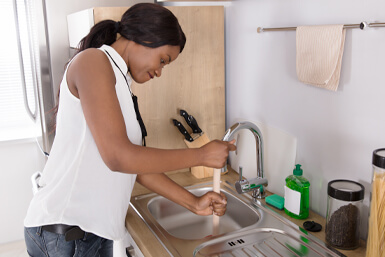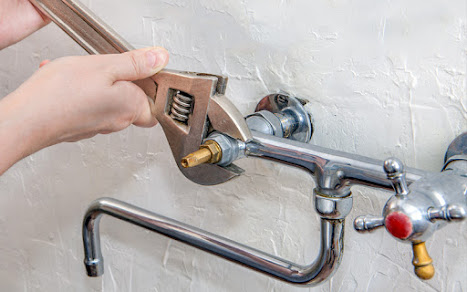The content in the next paragraphs relating to How To Fix Noisy Pipes is fairly engaging. You should give it a look.

To detect noisy plumbing, it is necessary to identify initial whether the unwanted audios happen on the system's inlet side-in other words, when water is turned on-or on the drainpipe side. Noises on the inlet side have actually varied reasons: extreme water stress, worn valve as well as faucet parts, poorly connected pumps or various other devices, incorrectly positioned pipeline fasteners, as well as plumbing runs having too many limited bends or various other limitations. Noises on the drainpipe side usually originate from bad area or, just like some inlet side sound, a design containing limited bends.
Hissing
Hissing noise that happens when a faucet is opened slightly normally signals extreme water stress. Consult your regional water company if you believe this issue; it will have the ability to tell you the water stress in your area and also can set up a pressurereducing valve on the inbound supply of water pipeline if required.
Various Other Inlet Side Noises
Squeaking, squeaking, scraping, snapping, as well as tapping normally are caused by the development or contraction of pipelines, typically copper ones providing hot water. The audios occur as the pipelines slide against loosened fasteners or strike neighboring house framework. You can usually determine the location of the problem if the pipes are revealed; simply follow the sound when the pipes are making sounds. More than likely you will certainly discover a loose pipeline hanger or an area where pipes lie so near to flooring joists or various other mounting pieces that they clatter against them. Attaching foam pipe insulation around the pipes at the point of get in touch with need to treat the problem. Be sure straps and hangers are safe as well as supply ample assistance. Where feasible, pipeline bolts should be attached to huge structural elements such as foundation walls instead of to framing; doing so lessens the transmission of vibrations from plumbing to surface areas that can magnify as well as move them. If connecting bolts to framework is inevitable, wrap pipes with insulation or other resilient material where they get in touch with bolts, and also sandwich completions of brand-new bolts in between rubber washing machines when installing them.
Fixing plumbing runs that struggle with flow-restricting tight or numerous bends is a last option that should be undertaken just after getting in touch with a skilled plumbing specialist. Unfortunately, this situation is fairly common in older houses that may not have actually been developed with indoor plumbing or that have seen several remodels, especially by amateurs.
Chattering or Shrilling
Intense chattering or shrieking that occurs when a valve or faucet is activated, and that typically disappears when the fitting is opened totally, signals loosened or faulty interior components. The remedy is to change the valve or faucet with a new one.
Pumps and also devices such as cleaning makers and dishwashers can transfer electric motor sound to pipes if they are poorly linked. Link such items to plumbing with plastic or rubber hoses-never inflexible pipe-to isolate them.
Drain Noise
On the drain side of plumbing, the principal objectives are to get rid of surfaces that can be struck by dropping or hurrying water as well as to insulate pipelines to consist of inevitable sounds.
In brand-new building, tubs, shower stalls, toilets, and also wallmounted sinks as well as basins ought to be set on or against resistant underlayments to minimize the transmission of sound through them. Water-saving commodes as well as faucets are much less noisy than conventional versions; install them as opposed to older kinds even if codes in your area still permit using older components.
Drainpipes that do not run up and down to the cellar or that branch into straight pipe runs sustained at flooring joists or other mounting present specifically bothersome noise troubles. Such pipes are huge sufficient to emit considerable resonance; they also lug significant quantities of water, which makes the scenario worse. In new construction, define cast-iron soil pipelines (the large pipelines that drain toilets) if you can manage them. Their massiveness consists of much of the sound made by water passing through them. Also, stay clear of directing drains in wall surfaces shared with rooms and areas where people collect. Wall surfaces containing drains need to be soundproofed as was explained previously, utilizing double panels of sound-insulating fiber board and wallboard. Pipelines themselves can be wrapped with unique fiberglass insulation made for the objective; such pipes have a resistant vinyl skin (often including lead). Outcomes are not always adequate.
Thudding
Thudding noise, usually accompanied by shivering pipes, when a tap or appliance shutoff is turned off is a condition called water hammer. The sound and resonance are caused by the resounding wave of stress in the water, which all of a sudden has no area to go. In some cases opening up a shutoff that discharges water promptly into an area of piping consisting of a limitation, joint, or tee fitting can produce the very same condition.
Water hammer can normally be cured by setting up fittings called air chambers or shock absorbers in the plumbing to which the issue shutoffs or faucets are linked. These devices enable the shock wave developed by the halted flow of water to dissipate airborne they include, which (unlike water) is compressible.
Older plumbing systems might have short upright sections of capped pipeline behind walls on faucet competes the same function; these can at some point fill with water, minimizing or destroying their efficiency. The treatment is to drain the water system entirely by shutting off the primary water valve as well as opening up all faucets. Then open up the major supply valve as well as shut the faucets one by one, starting with the faucet nearest the shutoff and also ending with the one farthest away.
Most Common Causes of Noisy Water Pipes
When you’re at home, you expect the pipes in your plumbing system to bring hot and cold water to all parts of your house at your beck and call. Whether you’re baking in the kitchen, relaxing in a hot bath, doing laundry in the washing machine, or simply need to flush the toilet, water supply and delivery is pivotal to daily life.
Unfortunately, these pipes aren’t perfect, and you may notice that some of them start to make noises over time. These seemingly random plumbing sounds might even scare you a little (you’re not alone!).
To make matters worse, loud noises coming from your piping can actually be an indicator of a bad plumbing problem or series of plumbing problems in your pipes. If left untreated, these clogging and drainage issues can become disastrous over time.
To get to the root of these noisy water pipes, let’s take a look at the common causes. While many causes exist, there are a few that crop up again and again in noisy pipes and plumbing systems that are worth being aware of.
So, without further ado, follow along below to find out once and for all what’s making that awful noise in your water pipes and what you can do right now to fix it.
Why Are My Water Pipes Shaking and Rattling?
While most piping lives behind the walls, floors, or ceilings of your home, some have to be hung with fasteners. If one of these slips, gets loose, or comes off completely, then the pipe can start moving or swaying as water runs through it.
Copper pipes in particular often expand as warm water travels across their metal surface, especially if the temperature on the hot water heater is too high.
Copper pipes carrying hot water can enlarge, but when they ultimately reduce in size again, this makes them scrape against a house’s joists, studs, or support brackets in the walls, resulting in loud noises.
If this happens, you’ll probably hear something that sounds like shaking or rattling going on in your walls. This is just the result of a slightly loose pipe, so it can be fixed rather easily, but it should be attended to quickly so the problem doesn’t get worse.
When you hear shaking and rattling in the ceiling or under the floorboards, don’t hesitate to call a trusted plumbing professional to take care of that noise before it gets unbearable.
Why Does My Plumbing Make a Humming Noise?
If the water pressure in your home gets too high for your house’s plumbing system capacity, your pipes can literally start to vibrate, much like a car traveling very fast down an open highway. If the water is running, you might start to hear a hum coming from your pipes.
While this might happen in a home of any type or size, if your home draws on well water, you’re at a higher risk for vibrating pipes. If this happens, do a quick check on your water tank, as you’ll usually want it set at no more than 55 PSI (pound-force per square inch).
In the event that you don’t have direct access to reading a water pressure meter on your tank, call a professional plumber to come and take a look. They can alter the system appropriately to get rid of that pesky hum.
Where Does That High-Pitched Whining Noise Come From?
Every house has a complete piping system of valves and other elements that depends on lots of tiny pieces and parts to enable the whole thing to work as it’s supposed to. Like any other piece of hardware, washers, nuts, and bolts (and much else) can become loose or wear out over time, resulting in a high-pitched whining noise.
This whistling sort of sound is most typically the simple product of a worn down piece of hardware near a dishwasher, washing machine, or dryer.
These specific areas are more susceptible to loose washers or other hardware because those appliances cause a significant amount of movement and can ultimately wear down nuts and bolts in that particular part of the piping.
If this happens to occur in your home, just have a plumber come in to tighten or replace the necessary hardware, and that should fix it up in no time.
How to Fix Loud Noises in Water Pipes
There are lots of causes for noisy water pipes, but the above list covers most of the common culprits. If you experience any of these sounds in your home, the best way to fix the issue quickly and painlessly is to get in touch with a trusted plumber or plumbing company.
At Kay Plumbing, we have years of experience helping families and homeowners get back to life after a difficult or pesky plumbing problem. If you live in Richland or Lexington County, look no further for a local plumbing team to get your pipes back on track.
If you need your drains cleaned or unclogged, we can have a trained, licensed, and insured plumber at your door, often in just a few hours.
Get in touch with us today so that you can stop living with unnecessary nuisance noises coming at all hours of the day and night. Let the good people at Kay Plumbing get you back to life as usual.
https://kayplumbing.com/plumbing-blog/most-common-causes-of-noisy-water-pipes/

Do you enjoy reading about Diagnose Unwanted Plumbing Noises? Write a comment down below. We will be interested to hear your thoughts about this posting. We are looking forward that you come back again before long. Appreciated our entry? Please share it. Help other people find it. I love reading our article about Why Do My Plumbing Pipes Make A Knocking Noise.
Go Company